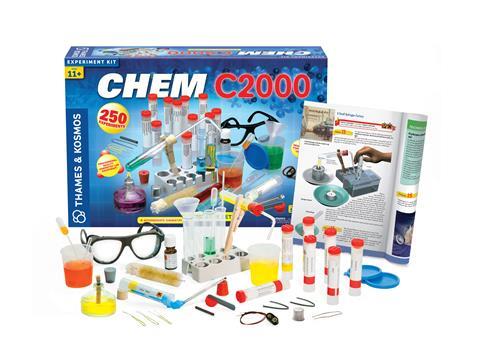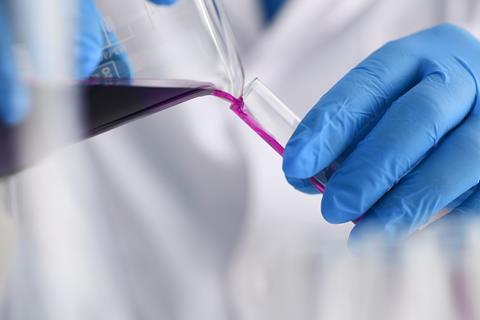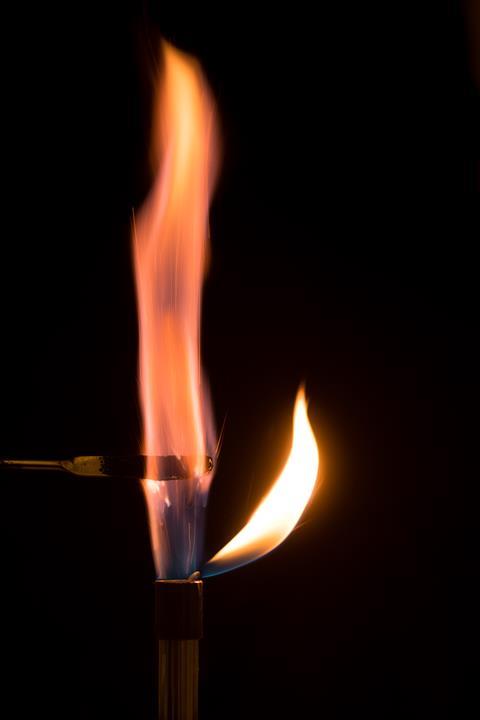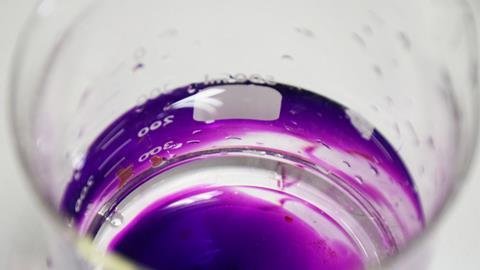Meera Senthilingam
This week, we reminisce over a compound paying a long-lasting role in a childhood favourite. Taking us back is Brian Clegg:
Brian Clegg
Once upon a time, one of the most exciting gifts you could buy for a child was a chemistry set. It wasn't just the exotic glassware and the promise of producing strange smells, colours, and, if at all possible, explosions. It was the glorious compounds that awaited in little tubes, one of which would almost certainly be potassium permanganate. Today's chemistry sets are ghosts of their former selves. You are more likely to find baking powder and citric acid than serious chemical supplies. But you can still find sets packing those beautiful purple crystals with their near-metallic sheen.

Potassium permanganate is more properly known as potassium maganate VII, because the compound is made up of a potassium ion and a 'manganate' ion, which combines manganese in oxidation state seven with four oxygens, giving a formula of KMnO4. However this is one of those compounds where the old name has stuck so strongly that it has no intention of going away.
The substance seems first to have been produced as far back as 1659 by the German chemist Johann Rudolf Glauber, now best remembered for 'Glauber's salt' - sodium sulfate - which he also discovered. Working on the borderline between alchemy and chemistry, Glauber had no idea what he had made, and the substance was largely forgotten until it was rediscovered by the British industrial chemist Henry Condy. Condy's company made disinfectants, and his greatest commercial success was 'Condy's crystals' which were simply potassium permanganate.
From day one, potassium permanganate's value has been as an oxidising agent - a compound that reacts easily to add oxygen to another substance. This is why it proved valuable as a disinfectant. Many disinfectants (bleach, for example) are oxidisers. They work by attacking the cell membrane that forms the outer 'skin' of a microorganism, oxidising it and degrading its structure. Because the reaction produced by potassium permanganate doesn't have toxic end products, it has been used both in conventional water treatment, where it removes taste and odour contaminants, and to clear swimming pool water. Medically, a solution is painted on to treat infected skin conditions, eczema, weeping ulcers and fungal infections.

But this is only the start of this versatile chemical's capabilities. In the process of oxidising a substance, potassium permanganate produces the deep brown manganese dioxide, forming a stain that will discolour practically anything organic. It even stains stainless steel and, to some extent, glass. This discolouration has been put to good effect in the film and TV props business where potassium permanganate is used to artificially age materials. The stain is quite difficult to get off the skin by washing, but can be easily removed with a dilute citric or oxalic acid solution, or by using the photographic fixing agent sodium thiosulfate.
Despite its tendency to discolour glassware, potassium permanganate also has a role to play in analytical chemistry, where its oxidising capabilities and strong colouration make it a good reagent for detecting the quantity of oxidisable organic material present, often matching it in titration against a standard reducing agent like oxalic acid.
But its most dramatic application comes from its ability to oxidise in a combustion reaction. This was certainly its glory in my pre health-and-safety chemistry set. Potassium permanganate made a pretty purple coloured liquid in solution, but its crystals came into their own with an addition from the food cupboard.

Take a small pile of potassium permanganate crystals and let a drop of glycerine fall on it. More properly known as glycerol (or propane-1,2,3-triol), this is a thick, clear, sweet tasting compound used in the food industry. Soon after dripping the glycerine onto the crystals, an acrid smell and a waft of smoke will arise before the liquid bursts into flame, powerfully oxidised by the potassium permanganate.
Most potassium permanganate is probably still used in water treatment and as a disinfectant - around 30,000 tonnes a year are produced. There is even a website dedicated solely to selling the compound. But you will also find it in survival kits. And it is here that we see the true versatility of this compound. Firstly, it's a way to produce a fire without matches in that reaction with glycerine. Secondly, it can be employed as disinfectant and as an emergency treatment for drinking water. And then that dramatic purple colouration means that it can be used to produce highly visible distress signals in snow. That's potassium permanganate - the natural born survivor of the chemistry set.
Meera Senthilingam
With uses in water treatment, disinfectant and movie props to name a few, it's a survivor outside of the chemistry set as well. That was Brian Clegg with the colourful and versatile chemistry of the multi-talented compound acetone. Now, next week: some murder mystery.
Peter Wothers
The name 'heavy water' conjures up vivid images of an amazing, super-dense liquid with workers struggling to lift tiny quantities. I was therefore a little disappointed to discover that it is not actually that heavy after all - in fact only about 10% more dense than normal water.
Perhaps one of the most striking differences is in the colour; heavy water is colourless. You may be thinking, 'but so is water', but actually it is not, it is very pale blue. This means if all the seas and oceans on Earth were filled with heavy water, we would not have a blue planet.
Meera Senthilingam
And to discover more properties of this colourless compound, that led to smuiggling and spy operations during the war, join Peter Wothers in next week's Chemistry in it's element. Until then, thank you for listening. I'm Meera Senthilingam.













No comments yet